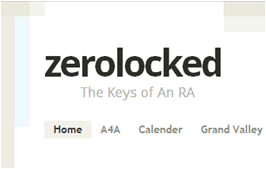Textbooks are an almost necessary part of most college classes, and there is a huge difference between reading them and reading them. That said, below are five helpful ways to better understand the nouns, verbs, adjectives, graphs and photos placed together in most college textbooks.
Find Key Terms & Content
It’s 2012, and many college textbooks today are a multimedia force. Writing wise, anecdotes and quotes combined with the author’s style of writing make up most of the text. This is to make the reading easy to understand and relevant to the student. It’s here where students need to differentiate what’s making the text easy to read and what needs to be known for exams. Underlined, bolded and italicized words or phrases and a HUGE indicator. Repetition is also a hint for context that should be remembered. Finally, photos and graphs often highlight subject-wise concepts that a student should focus on due to the complexity and subdivision of chapters.
Highlighting / Sticky-Notes
Many students use a highlighter to make notes of key sections of a textbook. This is kool because you focus on the most relevant, useful content that needs to be learned. Also, it creates a more refined chapter for students choosing to reread the chapter later. YES some students reread them! My choice of note taking is off sticky-notes. They act as bookmarks for different pages and allow you to write in the book (on the sticky-notes!) for general notes, definitions, or relevant class lecture. You can also make a nice study guide with them instead of flipping back and forth through highlighted pages.
Test Yourself
Many textbooks have specific pages that test your knowledge at the end of chapters or sections. A few examples of these are defining words/concepts, multi-choice questions and writing assignments. Though these are often optional, they really reinforce the knowledge that should be taken from the reading, meaning these can be helpful for exam preparation. Finally, many textbooks nowadays have an online component that is activated by either a code that came with the textbook or just visiting the companion website.
The Whole Chapter VS The Chapter Summary
Alright, first and foremost, reading the end chapter summary is not a shortcut substitution for reading the entire chapter. Most textbooks have an end chapter summary that summarizes the chapter together because typical textbook chapters themselves are broken up by content and context. The goal of the chapter summarization is to re-piece the puzzle together, not complete it from that ‘skip ahead’ chapter summary reading.
Bookmark
Taking a break when needed is key! Yes, it’s good to complete your assigned readings, though it’s all for nothing if external or internal factors are in the way (tiredness, schedule, Xbox). It’s always recommended to read when you have total focus, so if it isn’t there substitute it with a bookmark.
With all that said, how do you read your textbooks?
 Mario Adkins is a senior at Grand Valley State University (GVSU). When not drawing or playing his favorite video games, he can be found on campus facilitating programs and events as both a resident assistant and vice president of membership for GVSU’s OΔK Circle–a national leadership honor society. Follow him on Twitter @zerolocked.
Mario Adkins is a senior at Grand Valley State University (GVSU). When not drawing or playing his favorite video games, he can be found on campus facilitating programs and events as both a resident assistant and vice president of membership for GVSU’s OΔK Circle–a national leadership honor society. Follow him on Twitter @zerolocked.
 Mario Adkins is a senior at Grand Valley State University (GVSU).When not drawing or playing his favorite video games, he can be found on campus facilitating programs and events as both a resident assistant and vice president of membership for GVSU’s OΔK Circle–a national leadership honor society. Follow him on Twitter @zerolocked.
Mario Adkins is a senior at Grand Valley State University (GVSU).When not drawing or playing his favorite video games, he can be found on campus facilitating programs and events as both a resident assistant and vice president of membership for GVSU’s OΔK Circle–a national leadership honor society. Follow him on Twitter @zerolocked.
